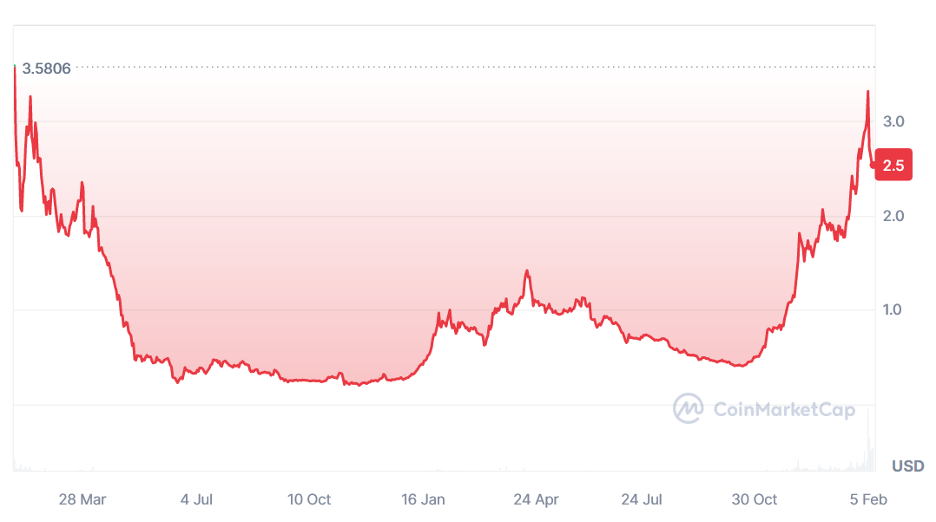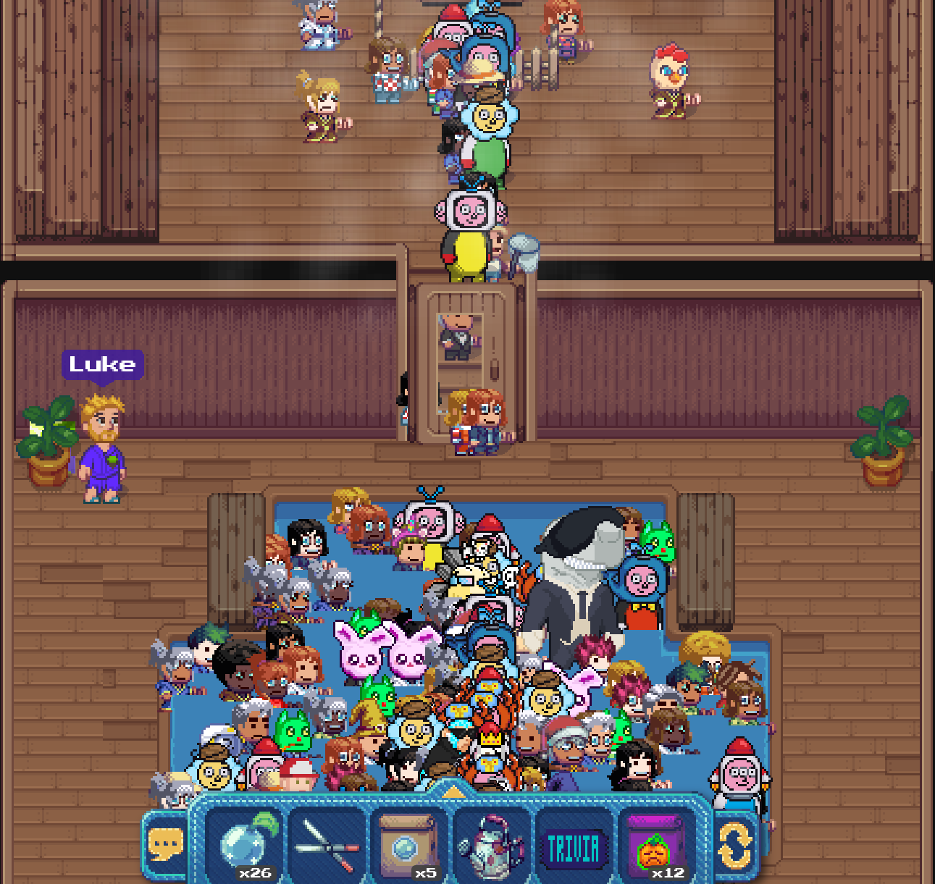I spent the morning playing a video game.
While I wasted a lot of time, I did earn some Popberries. And I learned a little something about the new generation of play-to-earn (P2E) games.
Pixels is a P2E game similar to the classic farming game Stardew Valley. It’s an open world where you develop plots of land, farm various crops, then buy and sell your crops in marketplaces to obtain more exotic items and skills.
Like real farming, it’s a lot of work.
[embedded content]
The “work” comes from spending a lot of time in the game. Like, a lot. You’ve got to plant seeds, water them, wait for them to grow, harvest the fruits, take the fruits to the town square, sell them, buy more seeds, and repeat. (And that’s just the farming.)
You can always buy your way to faster farming, but if you want to start from the beginning, get that index finger warmed up, because you’re going to spend a lot of time clicking.
I got interested in Pixels when I read they were doing a cross-promotion with Binance, as Farmer Barney kept reminding me every time I talked to him.
![]()
Binance is allowing users who stake their crypto in Binance Launchpool to earn PIXEL tokens, which can be used to buy stuff within the game … and which may go up in value as the game grows more popular.
What I wanted to know: Should I invest in PIXEL?
P2E Games: How They Work
P2E games reward players for their time and effort in the game. You defeat monsters, complete quests, or (in the case of Pixels) farm several thousand acres of Popberries.
In return for your work, you receive some kind of in-game token, which you can often sell outside the game on crypto exchanges.
The P2E market is rapidly growing, with billions of dollars invested in 2023. Some games – like Axie Infinity and Decentraland – have seen significant token price appreciation, attracting players who want to make money.
On the other hand, the market is also volatile. Many games struggle to retain players long-term, especially since the perceived value is based on the token price, not on how much fun it is to play.
There are currently about 1,000 P2E games, with over a million daily active users, according to DappRadar. The top games, like Axie and The Sandbox, have market caps worth over a billion dollars, according to CoinMarketCap.
It is tempting to write off P2E games as another weird crypto thing, like memecoins. But I think there is something more at play. As Chris Dixon said, “The next big thing will start out looking like a toy.”
![]()
If you think of the underlying technology behind P2E games being something more like redeemable reward points, it is an extremely valuable innovation.
You can see brands like Starbucks or Marriott “rewarding” customers for completing certain “quests,” like ordering new menu items or staying at a collection of properties – all using blockchain-based rewards points.
That’s not so different from a P2E game, except that games currently have to do it at scale, with thousands or even millions of players making real-time transactions 24/7. And most blockchains are not built to handle that.
Which is where Ronin comes in.
Ronin: Scaling P2E Games on Ethereum
Created by the team behind Axie Infinity, Ronin was developed as a sidechain to Ethereum (though not technically accurate, it’s easiest to think of it as a Layer-2 solution).
The goal of Ronin is to make transactions faster and cheaper than working directly with Ethereum. Gas fees are significantly lower, making gameplay more affordable.
(If you’re wondering why you wouldn’t just build your game on a faster Layer-1, building on Ethereum gives you access to everything built on Ethereum. For example, Pixels allows you to bring in your Ethereum-based NFTs into the game as playable characters.)
Of course, Ronin also has its own token, RON, which saw a lot of hype at launch, then promptly crashed to pennies before recently seeing a significant uptake after Pixels announced their deal with Binance:

I feel the same way about RON that I do about every other Layer-2 solution. I don’t know which of them will win, or if they’ll even be needed in the long term. Investing in L2s is like a bet-on-a-bet: you have to bet on Ethereum as the winning L1, then Ronin as the winning L2.
Why not just simplify, and invest in Ethereum?
After all, any value that is generated by any P2E game built on Ethereum will accrue to Ethereum. Every Ethereum game means more Ethereum wallets, more Ethereum users, and a bigger Ethereum ecosystem.
The easiest way to invest not just in Pixels, but every Ethereum-based P2E game, is just to buy and hold ETH. It’s like an index fund in the entire Ethereum ecosystem.
Less Payola, More Playability
If you’ve got the time and curiosity, play a bit of Pixels. Unlike most blockchain apps, it works right out of the box, directly in your browser, with no complicated setup. The usability is something every blockchain developer should strive for.
On the other hand, I kept running into limitations in the game where it wanted me to buy bigger plots of land, or NFTs, or access to a VIP room in the “sauna” area:

To me, traditional games like Fortnite strike the perfect balance between fun and money. Fortnite is free to play, and you can use the default characters forever. But if you want to upgrade your character, you buy V-Bucks (with real dollars), which is Fortnite’s revenue stream.
Upgrading your Fortnite character is more about the flex. It doesn’t give you new skills, or make the game run any differently. Playing as Iron Man or a giant banana is just more fun. And that is worth paying for.
I get the appeal of Pixels, but if I’m playing a game, I still want less commerce and more fun. Less payola, more playability.
Investor Takeaway
I’m a huge believer in the potential of these games – not just as games, but as reward mechanisms for any company that wants to incentivize customers to do something (try a new product, take a test drive, or use new features or products).
But for my money, ETH is still the best investment of all. If P2E games hit the mainstream, ETH will be the real in-game reward.
Health, wealth, and happiness,
John Hargrave
Publisher, Bitcoin Market Journal
- SEO Powered Content & PR Distribution. Get Amplified Today.
- PlatoData.Network Vertical Generative Ai. Empower Yourself. Access Here.
- PlatoAiStream. Web3 Intelligence. Knowledge Amplified. Access Here.
- PlatoESG. Carbon, CleanTech, Energy, Environment, Solar, Waste Management. Access Here.
- PlatoHealth. Biotech and Clinical Trials Intelligence. Access Here.
- Source: https://www.bitcoinmarketjournal.com/should-you-invest-in-pixel/



